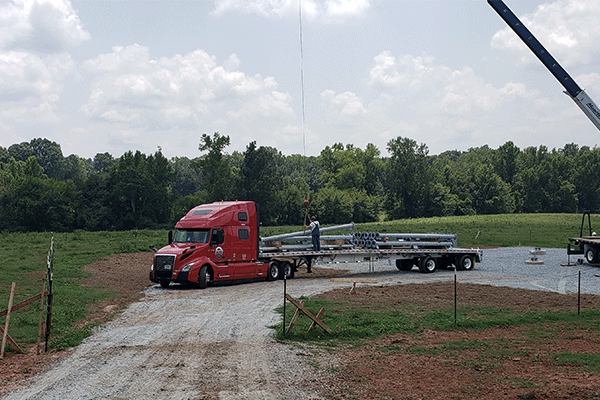
Unless you live off the grid, under a rock AND far from the beaten path, your day-to-day life is heavily influenced by countless industries.
Based on the fact that you’re reading this on the mighty interweb, though, leads me to believe you might know what I’m talking about.
If not, here’s a quick synopsis of my Monday morning routine — see if you notice a pattern.
Following a breakfast of warm oatmeal and a glass of orange juice (pulp-free because. . . gross), I throw on my favorite button-down shirt and hit the road to work in my Ford Edge. Upon arrival, I flip on my office lights, power up my computer and begin preparing for what promises to be another productive week.
Did you see it? Ok, I’ll describe it again but with a few hints this time.
Following a breakfast of warm oatmeal and a glass of orange juice (food and beverage), I throw on my favorite button-down shirt (retail) and hit the road (construction) to work in my Ford Edge (automotive). Upon arrival, I flip on my office lights (energy/utility), power up my computer (technology) and begin preparing for what promises to be another productive week.
Get it now?
Even in this minuscule 58-word paragraph, I’ve outlined six different industries that make their mark on my day. I’m willing to bet they do the same to yours.
The impact that American businesses have on our lives is truly astronomical. They keep us moving, entertained, sheltered and fed. But guess which industry is in charge of keeping them moving and productive?
The transportation industry.
The transportation industry is crucial to our survival, quality of life and livelihood. Without its help, your job would be far more difficult and your freight wouldn’t reach its destination. That said, there are so many trailer types and service offerings that it can be difficult to keep everything straight. And, although the transportation world has the perfect equipment type to meet your business’s needs, cataloging all of your options can be daunting indeed.
Here at ATS, we’ve been a core piece of the national trucking landscape since 1955. As such, we firmly understand the trailer type requirements of each industry and it’s time you did too.
Although there are countless industries, each of which utilizes various types of trailers, today, let’s talk about which trailers are used in the:
- Aviation/Aerospace Industry
- Agriculture Industry
- Construction Industry
- Energy/Utility Industry
- Food and Beverage Industry
- Manufacturing Industries
- Retail Industry
What Trailers Are Used in The Aviation/Aerospace Industry?
Millions of commercial airline flights take off and touch down each year. For many people, hopping on an airplane has become as routine as getting a haircut or walking the dog.
And more power to them.
The convenience and time efficiency of traveling 530 mph, non-stop, to your destination — 10 times faster than driving — can be highly beneficial and is only becoming more so. Who knows, with the way things are going a quick out-and-back trip to the moon might be in your not-so-distant future.
As the aerospace industry has seen a boom over the past few decades, the transportation world has needed to make adjustments to match the increased demand for aircraft.
To move the vast number of components necessary to keep the aerospace industry running, transportation providers utilize several trailers; depending on the size of the item in transit.
The trailers used to move larger items like aircraft pieces and engines are:
- Traditional flatbed trailers
- Step-deck trailers
- Lowboy trailers
Due to the sensitivity and complexity of the commodities transported in the aerospace industry, protection from the elements (wind, rain, dirt, etc) during transit is often necessary. To maintain the integrity of these items, transportation companies take measures to avoid potential issues during open-deck transport.
This includes, but isn’t limited to:
- Wrapping and tarping freight
- Utilizing a Conestoga
- Flatbed Conestoga
- Step-deck Conestoga
- Lowboy Conestoga
For smaller components, like machine parts and other palletized commodities where rear-loading is an option, dry van trailers are also commonly used.
Trailers used in the aviation/aerospace industry: flatbed, step-deck, lowboy, RGN, Conestoga and dry van trailers.
What Trailers Are Used in The Agriculture Industry?
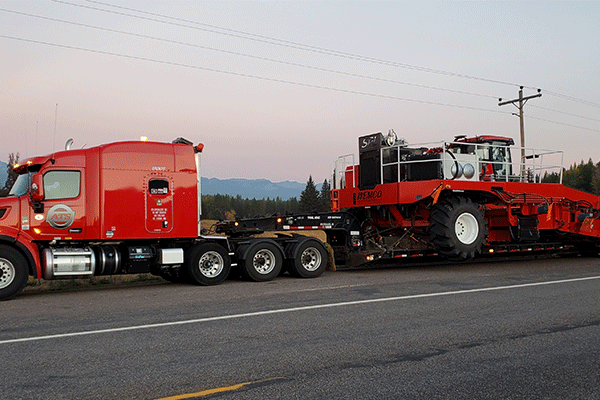
From sea to shining sea, the harvest of fresh fruits and vegetables shifts from each region to the next as the year progresses. Growing these commodities, picking them from the fields and transporting them to storage facilities never really slows down.
Whether it’s the large machinery — used to plant, nurture and harvest crops — or the movement of the raw goods themselves, there are plenty of trailer types used in this industry.
Most specifically, equipment like tractors and other farming components are transported to and from the fields via a myriad of open-deck trailers, including:
- 48 and 53-foot flatbed trailers
- Step-deck trailers
- Lowboy trailers
- 2 to 3-axle removable gooseneck (RGN) trailers — for large, mobile, machinery
Large equipment and materials — although important for managing, preparing and maintaining harvestable land — isn’t the only section of this industry that trucking companies cover.
Fertilizer, seeds and mass quantities of other small items also need to be hauled by truckers. As such, you’ll commonly see dry van and reefer trailers (with their temperature control unit turned off) making their mark on the business of feeding America.
Trailers used in the agriculture industry: flatbed, step-deck, lowboy, RGN, dry van and reefer trailers.
What Trailers Are Used in the Construction Industry?
You know that building you’re sitting in and the road you traversed to get there?
Yeah. All of that is available for your use thanks to the construction industry — with a gentle assist from the transportation world, of course :).
From fabricated steel, lumber, roofing products and everything in between, a wide array of materials are needed for the completion of each construction project. Truckers are capable of moving them all.
As you may suspect, to keep up with this versatility of demands means that practically every trailer type is needed. That said, the kind of trailer used for any given shipment — once again — comes down to the product in question.
Many types of raw and unfinished construction materials, for example, utilize traditional open-deck trailers, such as:
- 48 and 53-foot flatbed trailers
- Step-deck trailers
- Lowboy trailers
- Standard RGNs (for height-sensitive, heavy, freight)
- Expandable trailers (flatbed, RGNs, etc.)
Finished products on the other hand require protection from the elements in transit. To meet these needs, trailers like the dry van (for smaller items) and Conestoga are used in the construction industry.
Hot shot trailers are also a popular option for moving smaller quantities of open-deck freight in the construction world.
Construction companies rely heavily on flatbed, step-deck, lowboy, standard RGN, extendable RGNs, dry van, hot shot and Conestoga trailers to get products to each job site on time.
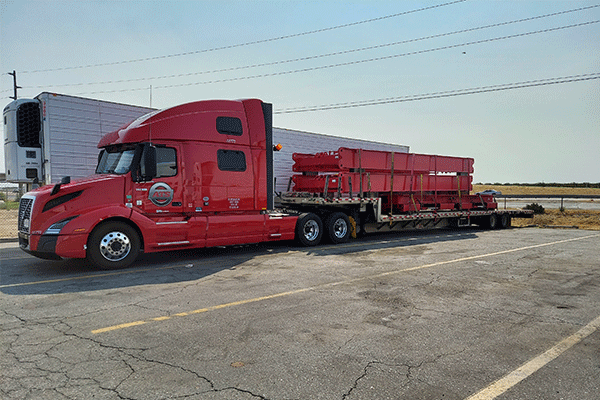
What Trailers Are Used in the Energy/Utility Industry?
The energy and utility industry is responsible for keeping your lights on, the phones ringing, your car moving and your refrigerator running. . . you better go catch it.
To administer these services though takes a foundation of infrastructure within every corner of the United States. Whether it’s a power plant, oil refinery or wind farm that needs transportation services, trucking companies have their arms full once again.
When it comes to the trailers used to move energy/utility freight — an industry that moves a vast array of commodities — you’ll commonly see these trailers at the helm:
- Flatbed trailers (48 and 53-foot)
- Step-deck trailers
- Lowboy trailers
- Standard and extendable RGNS
- Dry van trailers
- Multi-axle Schnabel trailers (for wind turbines)
- Blade trailers
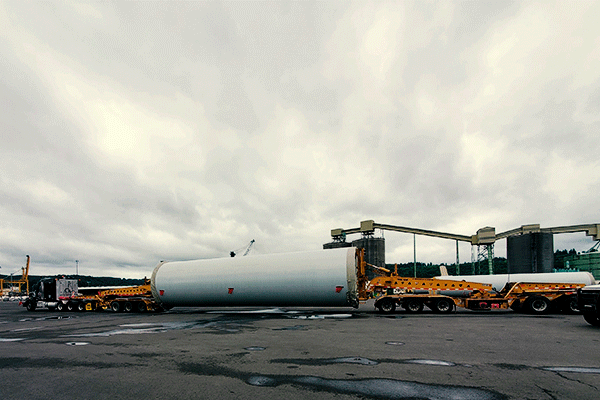
What Trailers Are Used in The Food and Beverage Industry?
One of the largest industries in the world is the food and beverage industry. Producing, transporting and distributing food and beverage commodities so that they’re right there, lining store shelves when you reach for them isn’t an easy task.
To do so, food and beverage shippers primarily utilize dry van and reefer trailers. Since a large portion of these goods are palletized, a 53-foot dry van trailer’s deck provides a cost-effective solution for hauling them from A to B.
Although there are several ways to load a dry van trailer, food and beverage shippers can usually fit 26-30 grocery manufacturers association (GMA) pallets (48x40) into a 53-foot van.
Other products that require temperature control during transit — like ice cream and poultry — lean on reefer capacities when it’s time for the rubber to meet the road.
It should be noted that, according to the Food Safety Modernization Act, products that can be harmful for humans and animals to consume without proper care must be transported correctly. As such, food and beverage companies that ship products that meet these requirements must use a reefer trailer to move them.
What Trailers Are Used For Manufacturing?
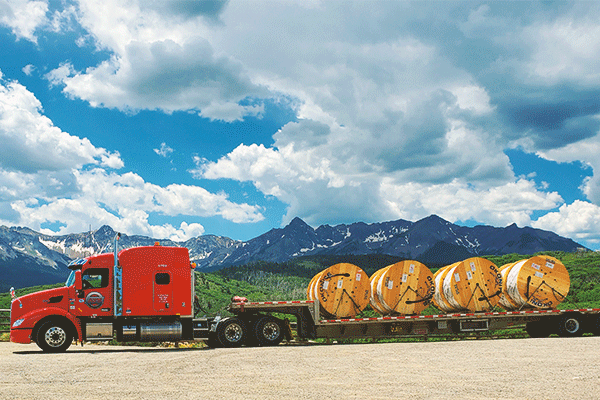
The method of taking raw materials and processing, fabricating, manipulating and preparing commodities from them is known as manufacturing. Practically every product in existence was at one point “manufactured” into its final form.
Be it a flatbed full of I-beams, a lowboy moving a tractor, a dry van moving textiles or a reefer loaded down with chemicals, the transportation industry is designed to meet manufacturing demands. Whether it’s inbound raw materials or outbound finished products, the most common trailer types used during manufacturing processes are:
- 48 and 53-foot flatbed trailers
- 53-foot dry van trailers
- Lowboy trailers
- Step-deck trailers
- RGN trailers
- Extendable trailers (RGNs, flatbeds, lowboys)
- Reefer trailers
What Trailers Are Used In the Retail Industry?
As a consumer, you’re likely very familiar with the retail industry. With the end goal of connecting you with the products you’re looking for, the retail supply chain is a complex network of manufacturers, warehouses, wholesalers and distribution centers.
To move the vast array of commodities that the everyday consumer desires is a tall task that the transportation industry can sometimes struggle to meet. That said when managed properly, moving the retail industry’s goods can be done using a smaller number of transportation service offerings.
You see, the majority of products in the retail industry are finished commodities, ready for public consumption. As such, dry van trailers shoulder a large portion of the retail industry’s transportation demands.
What Are The Dimensions Of Each Trailer?
As you now understand, each semi-trailer is incredibly versatile. From one industry to the next if you have a product to move the transportation industry has a trailer available to get the job done.
But how do you choose which trailer will fit your needs best?
This can be a difficult process for many shippers as, often, more than one trailer type fits their requirements. Understanding the legal dimensional capacities of each trailer, as well as when they’re commonly employed, will help you navigate these waters.
In the transportation world, the price you pay is intimately tied to the supply of transportation options you have to choose from and the total demand for their services. As such, expanding your knowledge on the capabilities of each equipment type will only help you in your journey toward maximizing your budget.
To do so, check out our article on What Are The Common Trailer Types Used in The Trucking Industry? for a comprehensive look at where each trailer excels and where it might fall short.




